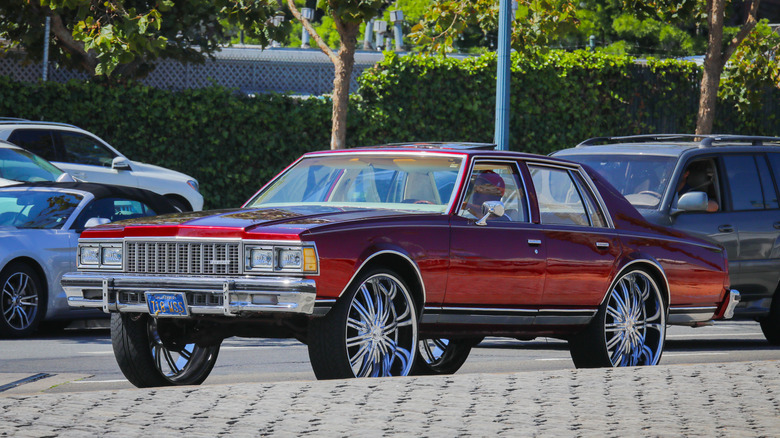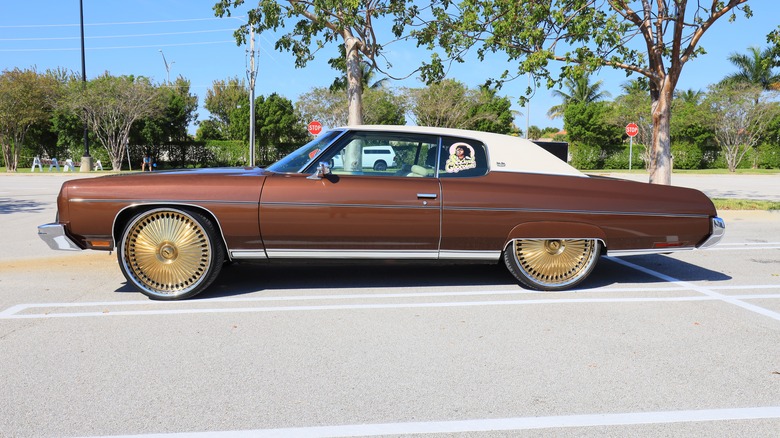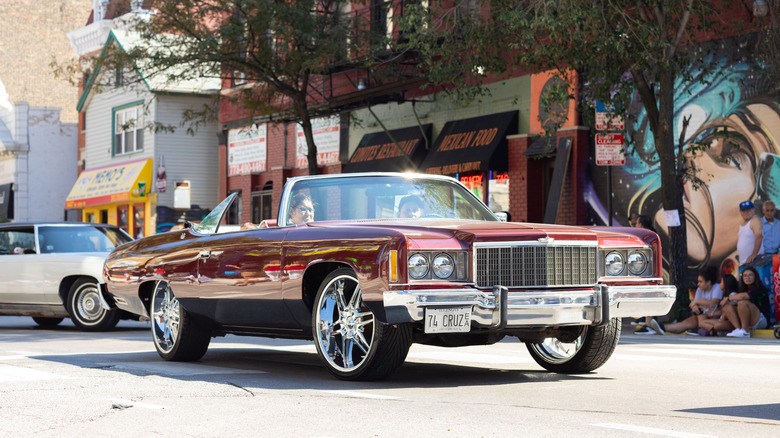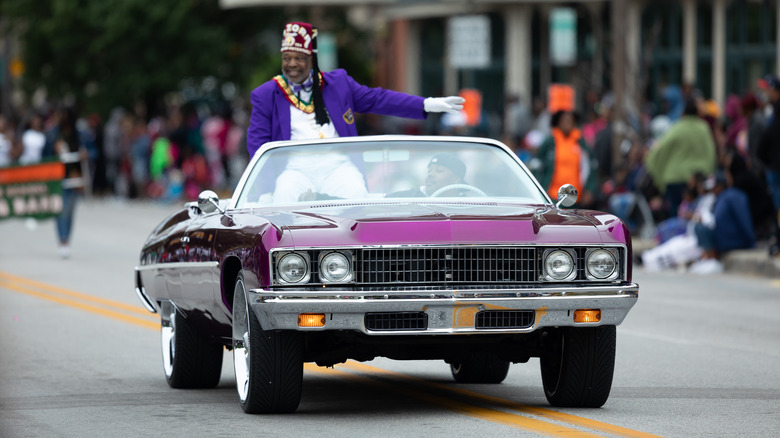
photo-denver/Shutterstock
The practice of car modification has taken on many forms over the years — all it takes is a bit of creativity, the right tools, and a car you don’t mind scuffing up a bit, and you can create all kinds of expressive automotive works of art. One of the epitomes of classic cool car modifications has been around for at least three decades, possibly longer: the donk car.
Despite the somewhat goofy name, donk cars are a staple of street style, packing massive wheels onto an ordinary chassis to create something akin to a diet monster truck, cruising down the road with the driver hovering magically above the ground. While it’s been a good while since the concept of the donk car entered the public consciousness, the practice of creating them is still fairly widespread, and if you’re so inclined, you can create a donk of your very own to cruise the streets.
What actually is a donk car?

FapGraphicsandPhotography/Shutterstock
In broad strokes, a donk car is any car that has had its usual wheels removed and swapped out for wheels of a substantially larger size. Because the wheels are so much bigger than the ones the body is designed for, it creates a distinctive image of the wheels carrying the body high over the pavement. While any typical car can technically get the donk treatment, the original donk cars, and the ones most readily accepted by enthusiasts, are the 1971–76 Chevrolet Impala and Caprice.
The precise origin of the donk, both the word «donk» itself and the practice of turning vehicles into donk cars is a bit murky. Enthusiasts generally agree, though, that the practice entered the public consciousness sometime in the early 1990s. The first donk cars were spotted on the sunny stretches of south Florida, with the vehicles making a particular splash in the local drag racing scene.
As for the name, there are a few theories, mostly of the belief that the hiked-up cars resemble a donkey getting ready to buck. Some believe the animal logo present on the Chevy Impala looks like a donkey as well, though there is no authoritative evidence for this claim.
What do you need to make a donk car?

Roberto Galan/Getty Images
A donk only has two vital components: a functioning car and big wheels. While you can attach oversized wheels to pretty much any car, diehard donk enthusiasts believe that it’s the classics or nothing; you specifically need a ’71–’76 Caprice or Impala to make a true donk, or else all you’re making is an ordinary high riser. Obviously, such cars aren’t exactly readily available, so you can feel free to use any car you want to customize. As long as it’s an older car with sufficiently sizable wheel wells, it’ll work fine. Just be aware that if you call a non-Chevy car a donk, you might get some sideways looks.
The other vital factor is the wheels. For the true donk experience, you need some real brutes of wheels, around 30 inches ideally, plus some low-profile tires to exemplify those big rims. Since a smaller car isn’t designed to accommodate wheels like those natively, you should be prepared to make some body modifications, especially in the suspension and drivetrain. If you just slap some big wheels onto a car without properly accommodating them, the body will fall right off of them.
Are donk cars safe to drive?

Roberto Galan/Shutterstock
As with most heavily modified cars, donk cars are more about looking cool than driving well. They undoubtedly look awesome slow-rolling through a suburban street, but when it comes to going 70 mph down a highway, you might want to have another regular car in reserve for running errands.
The obvious problem with donk cars is weight and balance; even if you modify the body to fit the oversized wheels, that fit can be very delicate. Compared to a properly balanced car, it only takes a few sudden jostles to throw crucial components like the suspension and transmission out of whack. Even just going a little too fast or taking a sharp turn can pop the lug nuts right off the wheels.
If you’re going to build a donk, make sure you build it for either low-stakes showcasing or straight-line drag racing. This isn’t really the kind of car that’s safe to casually drive around in daily.